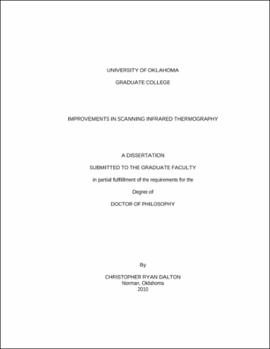Improvements in Scanning Infrared Thermography
Abstract
Non-destructive evaluation techniques are important for many industries. Scanning infrared thermography systems have the potential to analyze materials and parts, quickly, accurately, and at a reduced cost compared to other systems. Scanning infrared thermography uses Fourier's law of conductive heat transfer to detect both material and geometric anomalies in a particular sample. The current system has been developed to create an easy to operate physical system and an interface utilizing commercial software packages. New hardware components have been designed to work in concert with specially developed analytical models to treat surfaces with changing emissivity and uniformly finished surfaces like those used in traditional infrared scanning systems. A newly developed LabView program has simplified the data collection process by combining all data analysis into a single program. The program uses radiative heat transfer theory and incorporates temperature data from several sources to calculate the true surface temperature of the sample which is crucial for defect detection. An improved camera shroud has also improved the ability to handle variable emissivity surfaces. Several computational models have been developed to determine the defect detection resolution of a variety of defects using this system. Results obtained from the models showed that the system is capable of detecting crack defects as small as 0.5 cm in lateral length. Void defects and other 3-dimensional defects were shown to be marginally detectable as well. Radiative heat transfer analysis was performed on the camera shroud and it was determined that the camera shroud has little effect on the radiation received by the camera. The system has been successful at detecting defects on coated surfaces where cracks were oriented parallel to the heating element and at sub-optimal angles. In addition, new experimentation has shown the new camera shroud and LabView program to be successful at removing reflected radiation from variable emissivity, diffuse surfaces. However, the system has only been marginally successful at removing artifacts of reflected radiation from thermographic images of surfaces that show a high degree of specularity, making temperature correction and crack detection difficult. The system has also been used to test non-metallic samples to determine whether it would be a viable choice for applications in this area. A set of composite samples was tested to verify whether defects in this type of material could be successfully detected. Testing showed that sub-surface changes in thermal-conductivity could be detected using the current system. However, due to the extremely low thermal conductivities of some of the materials, testing proved to be much more time consuming and less successful than it is with metal samples. For thin sheets, delaminations and other sub-surface defects may prove difficult to detect.
Collections
- OU - Dissertations [9426]
